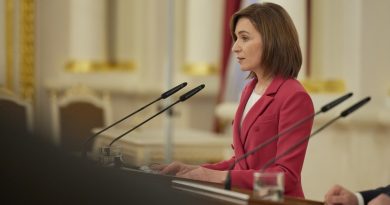The Protests in Iran Mark a Turning Point for the Country
Drew Starbuck
Staff Writer
The death of Mahsa Amini, a 22-year-old Kurdish-Iranian woman, while in the custody of the Iranian morality police has sparked nationwide protests and outcries of support from all across the globe. The protests have a remarkably different feel to them, evidenced in part by the endurance of the demonstrations throughout the past month. Reuters states that these protests represent the first major challenge to Iranian leaders in years. In fact, furious protestors are calling for the death of Iran’s leader, Ayatollah Ali Khamenei, chanting “death to the dictator.” According to the Wall Street Journal, students have continued to rally outside universities across Iran, with female students waving their veils as a sign of protest.
These protests are different from previous ones in the past decade which were focused on economic concerns and price hikes. The focus of these protests is oriented more toward a revolutionary stance focusing on human dignity and overwhelming discontent with the regime and desire to see them out of power. The visceral nature of the chants and the public support lend credence to the notion that these protests are remarkably different than previous protests against the regime. When protests erupted in 2019, the government responded brutally, arresting thousands and killing at least 321, although some estimate the death toll to be even higher, according to Amnesty International.
The Iranian regime, in the face of enduring and widespread resistance, has deployed familiar tactics used consistently since 1979. Security forces have been recorded using tear gas and live ammunition in several different regions across the country, especially in the Kurdish-dominated areas where protests have been particularly consistent. At least 100 people have been reported dead as a result of the protests, according to France24. Al Jazeera also reports that the government has instituted restrictions on internet usage meant to dissuade public gatherings and prevent images and videos depicting violent repression from being publicized. Protestors, however, have found ways around these tactics, including interrupting state broadcast media. According to Politico, in order to elude crackdowns, the movement has been forced to evolve from “spontaneous mass gatherings” to more dispersed protests.
Also exceptional about these protests is the involvement of bazaar traders in Tehran. The Grand Bazar in Tehran, the capital city of Iran, remains a major economic center in Iran where the merchants apply their trade. The regime has counted on the bazaar merchants for their backing and influence within the nation’s economy to shore up their support. However, Reuters notes, many bazaar traders have shuttered their shops in recent weeks as a sign of support for Iranian women, though state media claims the closings are due to fear of damage and looting. According to BBC News, traders have also set fire to a police kiosk and challenged government security forces. The support of the bazaar merchants along with the enduring nature of the protests from the youth and female population of Iran clearly signifies the exceptional nature of these protests.
The Associated Press spoke to six different female activists in the Kurdish-Iranian city of Sanandaj about the repressive tactics that the regime has used. They claim the government has used live ammunition, beatings, arrests, and internet disruptions to prevent the coordination of protestors. However, the activists note that protests continued in spite of the Iranian regime’s attempt to suppress them and designate the demonstrations as the actions of foreign adversaries such as the United States. Remarkably, despite all the efforts of the ruling government of Iran and Supreme Leader Ali Khamenei, the protests have persisted for a month and a half across the nation in the greatest challenge to Iranian central authority since the overthrow of the Shah during the Islamic Revolution of 1979.
Image courtesy of Darafsh


